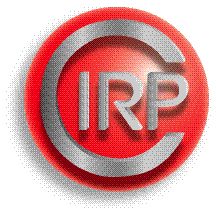Definition
In metal cutting processes, almost the entire mechanical energy is converted into heat. Sources of heat are the primary shear zone and secondary shear zones at the rake and flank face. Heat partitioning describes the fractions of heat dissipated by the tool, the workpiece, the chips, and the cutting fluid.
Theory and Application
Models on Heat Partitioning
Heat partitioning directly affects tool wear and surface integrity of the machined part. Therefore researchers have been aiming to predict it by different modeling and simulation techniques. One prominent approach is to utilize the moving heat source theory (Jaeger 1942) as an approximation for the stationary chip formation process. This kind of analysis enables a process description based on first physical principles. An excellent compilation and detailed discussion of models for the heat partitioning at the primary shear zone in orthogonal cutting is given by Komanduri and Hou (2000). The most important information of...
This is a preview of subscription content, log in via an institution.
References
Benjamin T, Count R (1798) An inquiry concerning the source of heat which is excited by friction. Philos Trans R Soc Lond 88:80–102
Boothroyd G, Knight WA (2006) Fundamentals of machining and machine tools, 3rd edn. Taylor and Francis, Boca Raton, p 130
Chao BT, Trigger KJ (1953) The significance of thermal number in metal machining. Trans ASME 75:109–120
Fleischer J, Pabst R, Kelemen S (2007) Heat flow simulation for dry machining of power train castings. Ann CIRP 56(1):117–122
Hahn RS (1951) On the temperature developed at the shear plane in the metal cutting process. In: Proceedings of first U.S. National Congress of Applied Mechanics, June 11–16, 1951, Chicago, pp 661–666
Jaeger JC (1942) Moving sources of heat and the temperature at sliding contacts. J Proc R Soc NSW 76(3):203–224
Komanduri R, Hou ZB (2000) Thermal modelling of the metal cutting process part I – temperature rise distribution due to shear plane heat source. Int J Mech Sci 42(9):1715–1752
Kronenberg M (1966) Machining science and applications: theory and practice for operation and development of machining processes. Pergamon Press, Oxford
Loewen EG, Shaw MC (1954) On the analysis of cutting temperatures. Trans ASME 76:217–231
Pabst R, Fleischer J, Michna J (2010) Modelling of the heat input for face-milling processes. Ann CIRP 59(1):121–124
Schmidt AO, Roubik JR (1949) Distribution of heat generated in drilling. Trans ASME 71(3):245–252
Sölter J, Gulpak M (2012) Heat partitioning in dry milling of steel. Ann CIRP 61(1):87–90
Weiner JH (1955) Shear plane temperature distribution in orthogonal machining. Trans ASME 77:1331–1341
Author information
Authors and Affiliations
Corresponding author
Editor information
Editors and Affiliations
Section Editor information
Rights and permissions
Copyright information
© 2018 CIRP
About this entry
Cite this entry
Sölter, J. (2018). Heat Partitioning in Dry Milling. In: The International Academy for Production (eds) CIRP Encyclopedia of Production Engineering. Springer, Berlin, Heidelberg. https://doi.org/10.1007/978-3-642-35950-7_16682-3
Download citation
DOI: https://doi.org/10.1007/978-3-642-35950-7_16682-3
Received:
Accepted:
Published:
Publisher Name: Springer, Berlin, Heidelberg
Print ISBN: 978-3-642-35950-7
Online ISBN: 978-3-642-35950-7
eBook Packages: Springer Reference EngineeringReference Module Computer Science and Engineering


